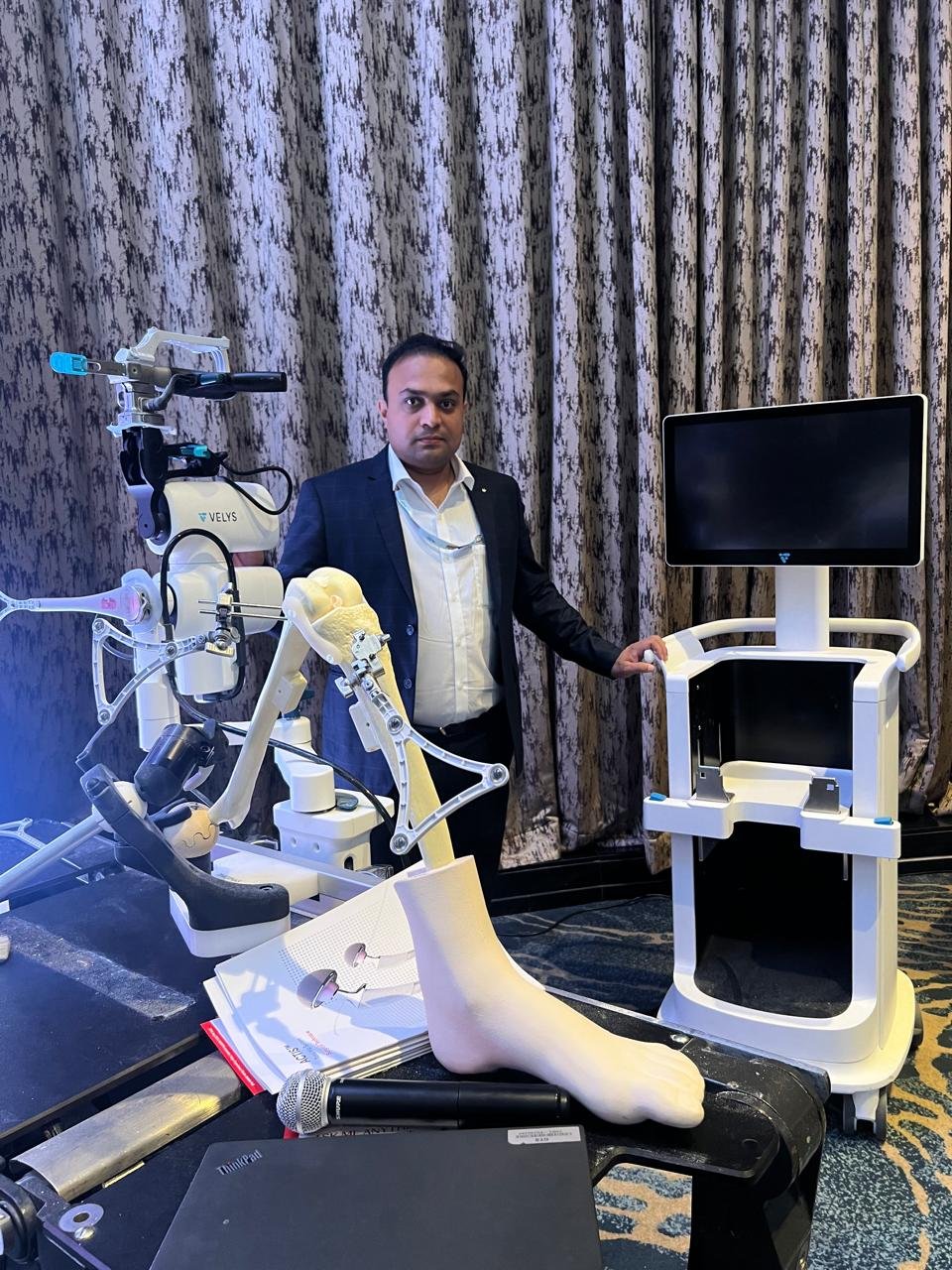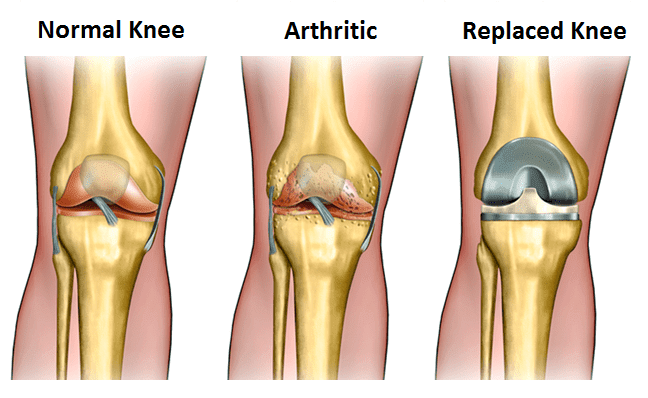Meet Our Doctor

Dr. Prajaktam M. Lende
ORTHOPAEDIC & JOINT REPLACEMENT SURGEON
Fellowships
- Navigation Based Joint Replacement Surgery (Hip & Knee Arthroplasty)
- Arthroscopy & Sport Medicine
- Ilizarove Surgery
- Observer Ship in Pediatric Orthopaedic Surgery (Wadia Hospital, Mumbai)
Knee Replacement Surgery In Nagpur
Home / Knee Replacement Surgery In Nagpur

Knee Replacement Surgery
Knee replacement surgery — conjointly called knee surgery (ARTH-row-plas-tee) — will facilitate relieve pain and restore perform in severely pathologic knee joints. The procedure involves cutting away broken bone and animal tissue from your femoris, tibia and kneecap and exchange it with a man-made joint (prosthesis) product of metal alloys, top-grade plastics and polymers.
In decisive whether or not a knee replacement is true for you, Associate in Nursing orthopedical operating surgeon assesses your knee’s vary of motion, stability and strength. X-rays facilitate confirm the extent of injury.
Your doctor will make a choice from a range of knee replacement prostheses and surgical techniques, considering your age, weight, activity level, knee size and form, and overall health.
Anatomy of the Knee
The knee is that the biggest joint among the body and having healthy knees is required to perform most everyday activities.The knee is formed of the lower end of the leg bone (femur), the upper end of the os longum (tibia), and so the kneecap (patella). The ends of these three bones unit lined with part cartilage, a sleek substance that protects the bones and permits them to maneuver merely within the joint.
The menisci unit placed between the femoris and os longum. These C-shaped wedges act as “shock absorbers” that cushion the joint.
Large ligaments hold the femoris and os longum on and provide stability. The long thigh muscles give the knee strength.
All remaining surfaces of the knee unit lined by a thin lining stated because the membrane. This membrane releases a fluid that lubricates the cartilage, reducing friction to merely concerning zero during a} very healthy knee.
Normally, all of these parts add harmony. but illness or injury can disrupt this harmony, resulting in pain, muscle weakness, and reduced operate.
Cause
The most common reason behind chronic knee pain and incapacity is disease. although there unit many types of disease, most knee pain is caused by merely three types: chronic joint unwellness, arthritis, and post-traumatic disease.
Osteoarthritis. usually|this can be} often Associate in Nursing age-related “wear and tear” type of disease. it continually happens in people fifty years aged and older, but may occur in younger people, too. The cartilage that cushions the bones of the knee softens and wears away. The bones then rub against one another, inflicting knee pain and stiffness.
Rheumatoid disease. usually|this can be} often a illness throughout that the membrane that surrounds the joint becomes inflamed and thickened. This chronic inflammation can injury the cartilage and eventually cause cartilage loss, pain, and stiffness. {rheumatoid disease | inflammatory disease|rheumatoid inflammatory disease|rheumatism|arthritis|autoimmune disease|autoimmune disorder} | rheumatism| arthritis | disease | response disorder} is that the foremost typical kind of a gaggle of disorders termed “inflammatory arthritis.”
Post-traumatic disease. this may follow a major knee injury. Fractures of the bones shut the knee or tears of the knee ligaments may injury the part cartilage over time, inflicting knee pain and limiting knee operate.
The knee consists of the following:
Tibia. this can be the shin bone or larger bone of the lower leg.
Femur. this can be the femoris or higher os longum.
Patella. this can be the kneecap.
Cartilage. a sort of tissue that covers the surface of a bone at a joint. animal tissue helps cut back the friction of movement among a joint.
Synovial membrane. A tissue that lines the joint and seals it into a joint capsule. The tissue layer secretes synovia (a clear, sticky fluid) round the joint to lubricate it.
Ligament. a sort of powerful, elastic animal tissue that surrounds the joint to convey support and limits the joint’s movement.
Tendon. a sort of powerful animal tissue that connects muscles to bones and helps to regulate movement of the joint.
Meniscus. A incurvate a part of animal tissue within the knees and different joints that acts as a cushion, will increase contact space, and deepens the ginglymus.
Replacing a bad knee.
Knee replacement surgery will facilitate with severe inflammatory disease pain and should assist you walk easier too. Wear and tear, illness, or a knee injury will harm the animal tissue around your knee bones and keep the joint from operating well. If inflammatory disease symptoms area unit severe, your doctor could recommend knee replacement.
Symptoms of knee inflammatory disease
Common forms of inflammatory disease area unit degenerative joint disease, {rheumatoid inflammatory disease|atrophic arthritis|rheumatism|arthritis|autoimmune disease|autoimmune disorder}, Associate in Nursingd inflammatory disease that happens once an injury. regardless of what kind you’ve got, the most symptoms of knee inflammatory disease area unit pain, swelling, and stiffness within the knee. Over time, it should get thus stiff that walking is difficult or perhaps not possible. you would possibly produce other symptoms too, counting on your kind of inflammatory disease.
Anatomy of the knee
Joints are the areas where two or more bones meet. Most joints are mobile, allowing the bones to move. Basically, the knee is 2 long leg bones held together by muscles, ligaments, and tendons. Each bone end is covered with a layer of cartilage that absorbs shock and protects the knee.
The knee consists of the following:
Tibia. This is the shin bone or larger bone of the lower leg.
Femur. This is the thighbone or upper leg bone.
Patella. This is the kneecap.
Before the procedure
Your doctor will explain the procedure to you and offer you the opportunity to ask any questions that you might have about the procedure.
You will be asked to sign a consent form that gives your permission to do the procedure. Read the form carefully and ask questions if something is not clear.
In addition to a complete medical history, your doctor may perform a complete physical examination to ensure you are in good health before undergoing the procedure. You may undergo blood tests or other diagnostic tests.
Risks of the procedure
As with any surgical procedure, complications can occur. Some possible complications may include, but are not limited to, the following:
- Bleeding
- Infection
- Blood clots in the legs or lungs
- Loosening or wearing out of the prosthesis
- Fracture
- Continued pain or stiffness
When a knee replacement surgery is required?
Knee replacement surgery is sometimes necessary once the ginglymus is worn or broken in order that your quality is reduced and you’re in pain even whereas resting.
The most common reason for knee replacement surgery is degenerative joint disease. different health conditions that cause knee harm include:
- rheumatoid arthritis
- haemophilia
- gout
- disorders that cause uncommon bone growth
- death of bone within the ginglymus following blood offer issues
- knee injury
- knee deformity with pain and loss of animal tissue
Best AVN treatment In Nagpur
Dr. Prajaktam Lende is a trusted Orthopedic doctor In Nagpur. Top joint Replacement surgery Doctor in Nagpur. Book an Appointment with Dr Prajaktam M. Lende, one of the prominent orthopaedic surgeon specialised in Joint Replacement surgery and ligament Reconstruction surgery Dr Prajaktam M. Lende at Nagpur. He is currently associated with the Orthopedic & Joint …
